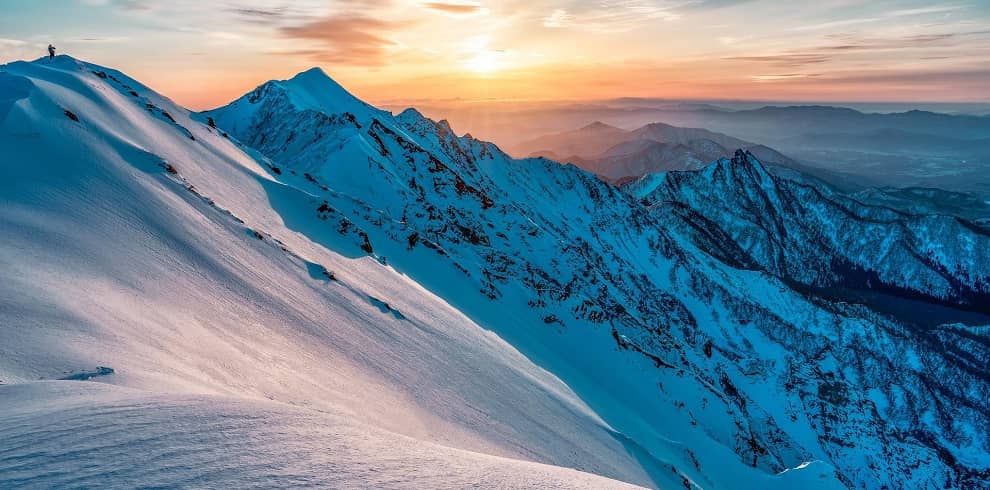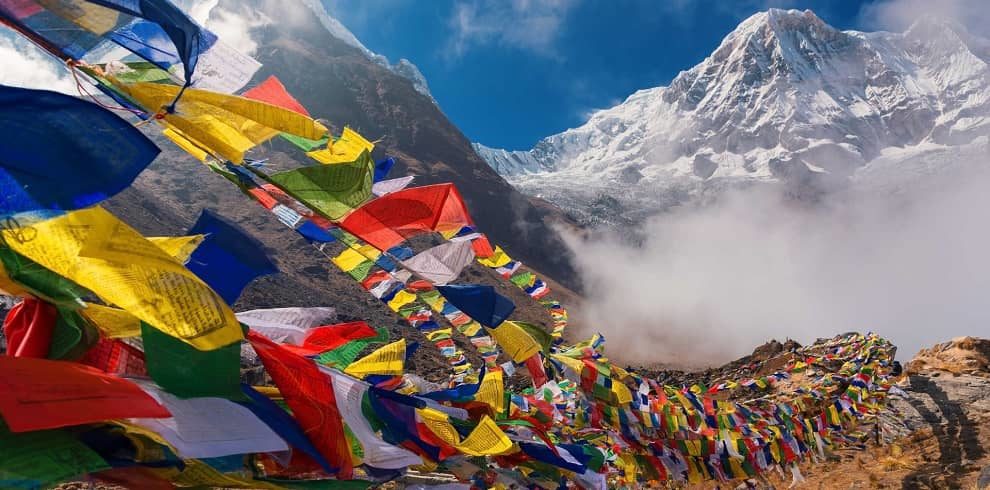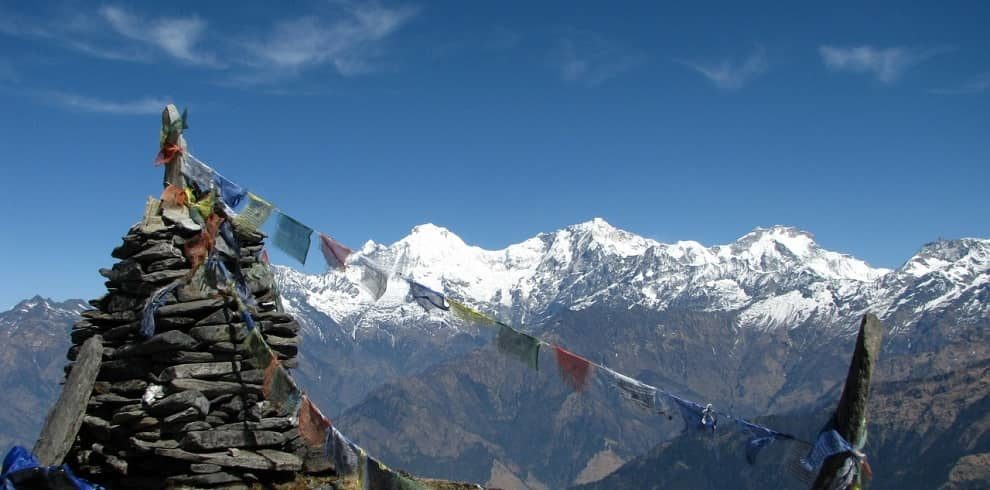Introduction Three Peaks Climbing: Pokalde Peak, Island Peak, and Lobuche East Peak In Nepal
The Three-peak climbing: Pokalde Peak, Island Peak, and Lobuche East Peak comprise three of the most beautiful peaks in the Khumbu region, and they guarantee to take you on a magical adventure.
Although everyone wants to climb Everest, these nearby minor peaks – Lobuche, Phokalde, and Island Peak – have their own climbing history and may be a prerequisite for a mountain adventure.
Pokalde Mountain, also known as Dolma Ri (5806 m/19,043 ft.), is the smallest of the three peaks at 5806 m. It is also the easiest to climb, thus it is the first peak we summit.
At 6189 meters above sea level, the Island Peak is a difficult climb. Island Peak, also known as the Imja Tse, is a popular choice for newbie mountaineers who want to start their experience by summiting Island Peak before continuing on to other summits.
The mountain was given the name “Island Peak” in 1952 AD because of its stunning location in the center of the Chhukung valley, like an island in a sea of ice.
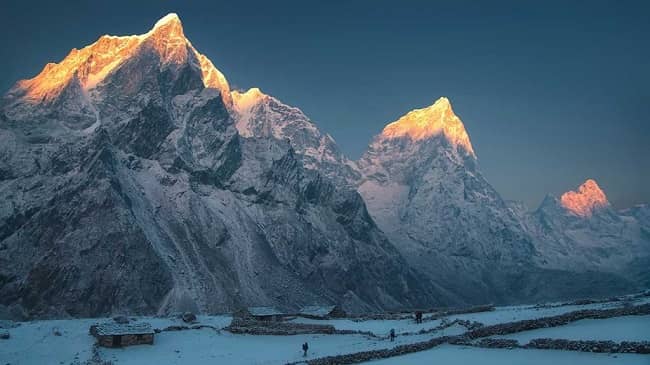
Island Peak’s west face, which rises from the Lhotse Glacier, is breathtaking and highly glaciated; anticipate being swept away by the majesty of these magnificent mountains.
Finally, the pure elegance of Lobuche Peak rises to 6119 meters and is the most difficult of the three summits to climb, making it one of the most difficult ‘trekkers peaks’ in the Everest region.
Lobuche is near the Khumbu Glacier and features two important peaks, Lobuche Far East and Lobuche East. Lobuche East, at 6145 meters, is 26 meters higher and more difficult than Island Peak, but it is also far more rewarding.
This excursion will also take you to some of the most popular Everest region sites, where you will be treated to breathtaking views of Everest and other Himalayan terrains.
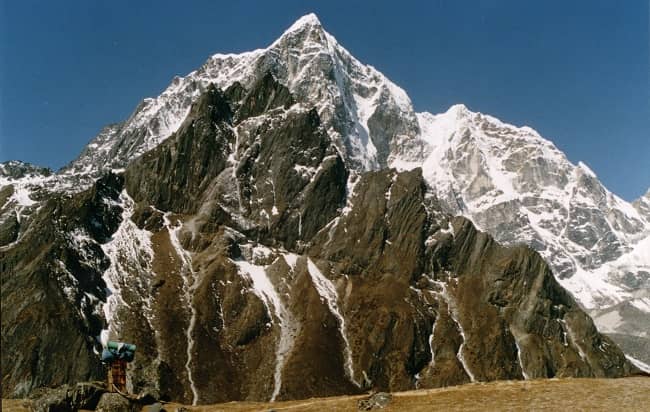
Highlights Of Three Peaks Climbing: Pokalde Peak, Island Peak, and Lobuche East Peak In Nepal
- Pokalde, Island, and Lobuche are three peaks in the Everest region that can be climbed.
- Pokalde Peak (5806 meters), Island Peak (6189 meters), and Lobuche Peak (6119 meters) are the highest peaks in the region.
- Awe-inspiring vistas of the world’s tallest mountains. Mt Everest, Mt Cho Oyu, Mt Lhotse, Mt Makalu, Lhotse Middle Peak, Lhotse Shar, Mt Nuptse, and Mt Baruntse are among the highest peaks in the world. Similarly, in the Everest Region, the spectacular Ama Dablam, and other neighboring peaks.
- Climbing from easy to tough peaks in one trip is the ultimate peak climbing experience.
- Explore the Sherpa culture and learn about their way of life in the midst of the world’s highest peaks.
You may also visit Discover Kathmandu-Cost, Distance, Itinerary, In Nepal – 4 Days
Overview Of The Three-peak climbing: Pokalde Peak, Island Peak, and Lobuche East Peak
- The Three-peak climbing: Pokalde Peak, Island Peak, and Lobuche East Peak is a super adventure climbing package, which comprises three of the most iconic peaks in the Everest region.
- The Dolma Ri (5,806m/19,043ft) or Pokalde Peak (5,806m/19,043ft) is a much simpler climb. The Island Peak (6,189m/20,305ft), formerly known as the ImjaTse and located in the heart of the Everest region, in the middle of the Chhukung valley, is the most popular but also the most difficult the climb.
- The ascent up Mt. Lobuche East (6,119m/20,070 ft) is a little more difficult than the Island Peak. Lobuche East (6119m), Pokalde (5,806m), and Island Peak (6189m), albeit designated as “trekking peaks,” are somewhat challenging and provide the finest possible start to the Himalayan climbing in one of the world’s most stunning places.
- The beauty of the wild and icy mountains that open before our eyes is a reward for all of our efforts in hiking and ascending them.
Itinerary
Includes/Excludes
Includes
- 24 breakfasts, 21 lunches, and 23 dinners, including welcome and farewell dinners, are included in the program.
- All airport/hotel transfers are included.
- Kathmandu, three nights in a three-star hotel.
- In the mountains, there is a teahouse or tented accommodation.
- All meals in the mountains and breakfast in Kathmandu.
- All ground transportation is provided by private automobiles in accordance with the itinerary planned.
- All necessary personnel is present, including an experienced English-speaking climbing leader/guide, a cook, an assistant climbing leader (one for every four trekkers), and Sherpa porters (2 trekkers to 1 porter).
- All necessary paperwork, including hiking permits and climbing permits for Pokalde Peak, Island Peak, and Lobuche Peak.
- Duffel bag, t-shirt, and trekking map for Himalayan Glacier Trekking (down jacket are to be returned after trip completion).
- Kitchen, dining, toilet tents, mattresses, and kitchen equipment for group mountaineering climbing, and camping—very high-quality North Face or Mountain Hardware or similar kitchen, dining, toilet tents, mattresses, and kitchen equipment.
- Arrangements for travel and rescue.
- Bag with Exclusive Medical Kit.
- All federal, state, and local taxes.
Excludes
- Fees for Nepal visas.
- International flights to and from Kathmandu are available.
- Charges for excess baggage.
- If you need an extra night in Kathmandu owing to early arrival, late departure, or early return from the mountain (for any reason), you can do so.
- Oxygen chamber (PAC) or altitude chamber (PAC).
- In Kathmandu, lunch and dinner are served (and also in the case of early return from mountain than the scheduled itinerary).
- Insurance for travel and rescue.
- Climbing gear for individuals.
- If needed, a personal climbing guide can be arranged.
- Expenses for individuals (phone calls, laundry, bar bills, battery recharge, extra porters, drinking water, shower, heater, etc.).
- Optional excursions and sightseeing if the trip is extended.
- Tips for porters and guides.
three peaks climbing: pokalde peak, island peak and lobuche east peak- 25 days
Lobuche East is a Trekking Peak, while Lobuche West is an Expedition Peak, according to the NMA. It is classified as a Moderate level climb because it is a trekking peak. This walk will include numerous uphill and downhill hills. Climbing the Lobuche summit is appropriate for people of all skill levels.
The Island Peak adventure takes at least 19 days to complete, including time in Kathmandu, and includes 16 days of trekking and climbing. We do recommend adding extra time to your travel plans to account for possible flight delays entering and exiting the highlands.
The Island Peak Expedition costs US$5,300 per person and departs from Kathmandu, Nepal.
Climbing Island Peak can be done on its alone or in conjunction with Mera Peak or the Everest Base Camp Trek. However, it is sometimes utilized as an acclimatization climb before tackling a more difficult peak like Ama Dablam or Mount Everest.
